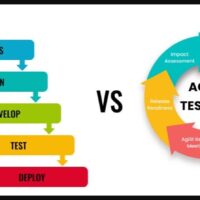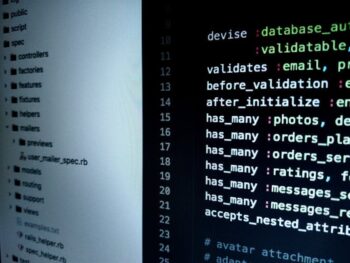
Domain driven design is a method used by software developers to simplify the complex process involved in linking an evolving model and the implementation process. Many software developers are faced with the task of having to balance between the technical vocabularies of a business domain and the complex vocabulary of a developer. The duality involved in such a situation cannot be avoided and therefore, it is the duty of developers to work their way through it. The work of the developer has to be framed in terms of computation, algorithms and many more. This means that they barely have any equivalence to the vocabulary of the business. This therefore gives room for developers to adopt a language policy that solves these difficulties. A developer cannot jump on a project and start the coding process, building the software and all that. DDD helps developers understand the client’s needs at first. This means that the end game of building a software or app is to solve problems instead of writing a code.
The organization gets a usable model of the domain
The use of DDD is to ensure that all your efforts are directed to every detail that matter to the business. You therefore do not need to over model on the products. It is therefore good for the developers to pay attention to the core domain. There are many models in existence to support the core domain and they are significant. But the extra models cannot be given high priority as you would on a core domain. Always focus on what will make your business different from the competitors. DDD makes it easy to understand the mission of the business and have the right path to follow.
It creates a precise definition and understanding of business
With the DDD in place, a business has the chance to have better understanding of its activities and the mission. There have been incidences where ubiquitous language that is meant for developing the core domain of a business has been used for marketing. This is appropriate because DDD should be embedded in the vision and mission statements. As the DDD model gets refined over time, the business gets a deeper understanding which can be used as a tool for analysis. Every domain expert will give you different details and these details can be shaped by the technical team members. When these details are considered, your business can easily analyze how valuable the current direction is and how it will affect the future of the business.
DDD experts help in software design
A business gains value when the management has a better understanding of the core domain. It is very rare for domain experts to agree on business terminologies and concepts. In other cases, the difference between the business and the domain expert experiences are created by varying experiences from other areas. This could happen because of the different paths that are expected by each expert working in the same business. When you bring a DDD, it is possible for domain experts to have consensus among each other. Software developers now have a common language which unifies the team with domain experts. Developers gain even more when they get hold of information shared among them by other experts. When developers move from one core domain to the other, or to another organization, it is easy to train them.
Improved user experience
In many instances, the end user experience of the software or application can be tweaked to depict the domain model. Domain driven is usually incorporated to influence how humans use the software. When a developer gives so much room for their users to understand, it may take some training for users to make a lot of decisions. This implies that the user is putting down information from their mind onto the forms they fill. The data collected is then saved and if a user does not understand what is needed, inaccurate data will be collected because it will be solely guess work. This means that there will be little productivity and this will only change when users can learn how to use the particular software. When developers design a user experience that follows the path of the core model, it will lead users to giving accurate conclusions.
Creates clear boundaries based on the models
A developer team is not allowed to do what might appeal to their work and design interests. They should not align their products expectation on the advantage of the business core model. With a pure direction, developers can fully focus on the success of the solutions provided. This can be done by directing efforts to sectors that really need it the most. When a team of domain experts understand this, it can be equated to understanding the exact context of the project they are working on.
Better organization of enterprise architecture
When bounded contexts are adequately understood and well partitioned, all the team players in the business will come up with a better understanding of why it is important to have negotiations. Most of these boundaries among teams are explicit and this extends even into their relationships. Teams that have models based around shared usage use contextual maps to create formal relationships and ways to integrate them. This can lead to a very detailed understanding of the entire architecture.
DDD provides room for iterative, agile and continued modeling
When the word design is mentioned, it can create some negative thoughts within business mangers’ minds. However, DDD is not such a significant phenomenon. It does not ha e any implausible designs and development designs. DDD is not based on drawing images; it mainly entails the process of the concept models of domain experts. These concepts can be created into real world examples because they are meant to look like real life occurrences. The efforts of such a team need to follow a feasible approach which is incremental and iterative. The agility of a process used for creating DDD can make the team feel comfortable and make a project successful. The model produced can be the working software which will go through multiple refinements till it does not benefit the business any more.
It can act as a tool for strategic and tactical execution
The existence of bounded contexts gives a team the necessary modeling boundary which can be used to solve specific business problems in a domain. A single bounded context uses ubiquitous language developed by the team. The only way such languages can be communicated is through a software model.
Conclusion
Now that you have seen how great Domain driven design is, it says so much about its impact on software development. In summary, design driven domain approaches shifts the focus from methods, project management tools and shift them to the core domain of the software under development and the domains that would be relevant to engage in.















